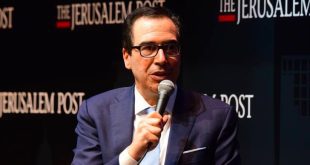
Photo: RIA Novosti
The budget for the current year the government proposes to take, based on very optimistic assessments — an average annual oil prices of 50 dollars per barrel. A more realistic assessment of petroleum in 2016 at about $ 40, which means that the expected volume of budget revenues will be adjusted downwards — like a year ago. Estimation of the volume of GDP fell at the end of March 2015 with up to 73,16 77,5 trillion rubles — the relevant amendments were adopted by the state Duma. A reduction of GDP by more than 4 billion roubles accordingly reflected in the revenue budget. Something like we can expect this year. This will mean that the budget will face a new reduction in costs.
In this case, while the government continues to plan budget, based on expectations of GDP growth in 2016 to 2.3 per cent. Last year the government predicted the GDP growth by 1.2%, but instead we got a drop of about 3%. Current expectations are also too high.
Our economic growth after the crisis 2009 was based mainly on domestic demand — consumption and investment. The past year has shown that both investments and consumption are declining. This is evident by changes in consumer behavior and reduction of turnover in retail trade. We have no preconditions to ensure that demand and without demand there is no economic growth.
Another element of the supply act on public procurement. In this segment in accordance with the Federal law on budget for 2016 a small increase is planned. However, if we consider public spending in real terms, we find that they also fell by 2-3%. That is, nominal government spending slightly increased, and the situation is definitely much better than consumer spending. But due to this factor the growth of the economy in the current situation to ensure it does not — unlike the 2009 crisis, when the increase in government spending has become a point of growth.
See also:
Andrei Movchan: “We have all the parameters are in the category of third world countries”
The last factor, which we traditionally viewed as the point of growth is exports. Russia still has a positive trade balance, and, most likely, due to the stabilization of oil prices, this tendency will become even stronger, but this also will not lead to economic growth in real terms. Against this background, there is a slight strengthening of the ruble — although it is necessary to speak with caution. At least, this fall of the national currency, like last year, once again, is not unexpected.
Growing problems associated with the implementation of regional budgets. Data on consolidated budget 2016 we have the following distribution of different fractions of: Federal budget without taking into account interbudgetary transfers “weighs” 49%, regional and local budgets — to 29% and extra — budgetary funds- 22%. That is, we still have a centralized budget system with a very high dependence of the regional and local budgets from Federal money. With regard to extrabudgetary funds, the share of Federal spending is over 70%.
Revenue base of regional and local budgets reduced, which is reflected in the growth of debts of the Russian regions. The problem is that the Federal budget is responsible for such things as defense and part of the government spending associated with the redistribution of money, in particular the pension system. On the shoulders of sub-Federal budgets represents a significant share of expenditure on education and health, almost all utilities and the expenditure on culture. These areas can greatly subside, although in nominal terms spending on them remained at the same level. For sub-Federal budgets deficits and debts have become an unpleasant problem, and a particularly nasty debt composition — 56% of it are market commitments, in which there is significant share of expensive Bank loans. The flexibility of regional fiscal policy is markedly reduced because of this factor: you have a significant portion of their costs be spent on debt service and do not have the ability to Fund what is necessary. The revenues of regional budgets by more than half depend on the tax to incomes of physical persons and the profit tax, the revenue from which is declining along with declining real incomes and the deterioration of the investment situation.
Today, 30-35% of regional revenues are transfers from the Federal budget. Local budgets depend on transfers is already 60-70%. A significant proportion of these funds allocated as targeted grants, which require co-financing from the regions. To receive subsidies, the regions will need to seek additional funding sources. Now, fewer subsidies for housing, which after a while will lead to another increase in utility rates for citizens.
Considering the elections of 2016 and 2018, all these difficulties will be postponed for the future. That is, on the Federal level we will continue to increase public debt. Today, the accumulated economic problems have to be solved after the elections, when they will become even sharper.

 See also:
See also:






